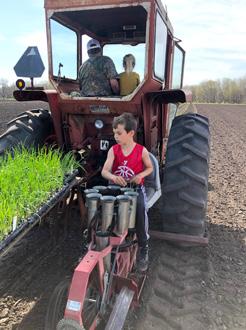
1 minute read
Reliabank
Griffin Patzer feeds plugs into the planter at Cherry Rock Farms with his grandfather, David Picasso, and sister, Clara, in the tractor. Photo by Laura Patzer.
SOIL HEALTH A TOP PRIORITY
Advertisement
The second half of their “down-to-earth” approach is a deliberate focus on soil health. “Once you have healthy soil, everything else falls into place. It’s not always something that’s been done on this farm, but we’re trying to move strongly in that direction. It’s kind of like turning a ship – it’s doesn’t happen overnight,” Marco said. In today’s world, their land and soil management approach is called “regenerative agriculture.” While the “intensive agriculture” which started in the 1800s and accelerated after World War II resulted in an abundance of low-cost food for many parts of the world, there’s evidence it came at a cost to natural resources.
The local foods movement has been a driving force encouraging vegetable growers such as Cherry Rock and other small, direct-to-market producers to be leaders in regenerative agriculture. Frequent practices in this conservation and rehabilitation approach include: • Diverse crop rotation • Multi-species cover crops • No-till and low-till farming • Soil management • Rotational grazing Today, many farming operations, large and small, are returning to some or all of these regenerative practices.



reliabank.com



Sioux Falls | Colton | Estelline | Hartford | Hayti | Hazel | Humboldt | Tea | Watertown





